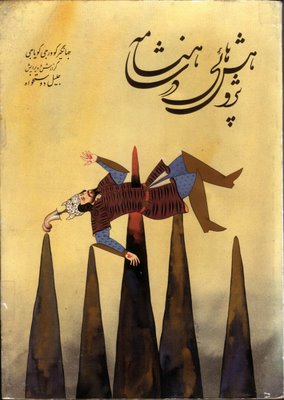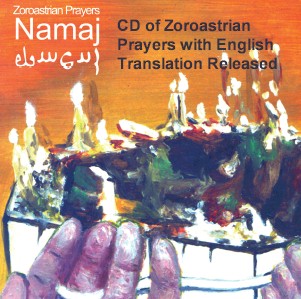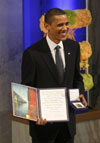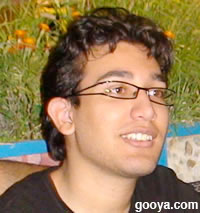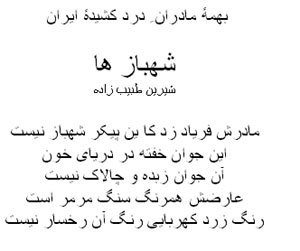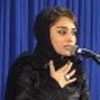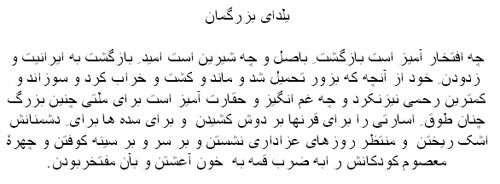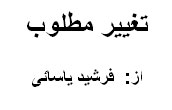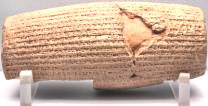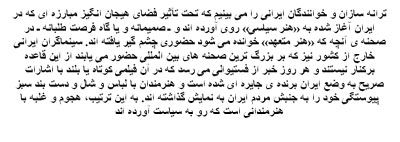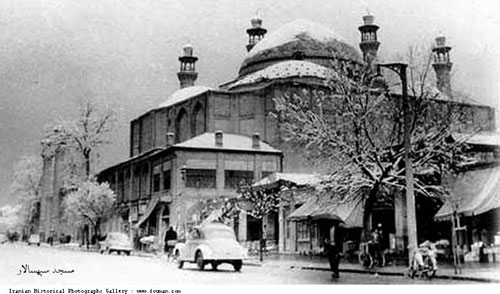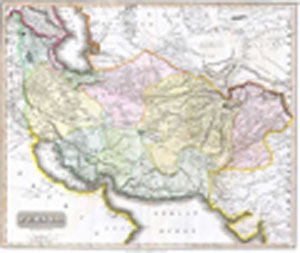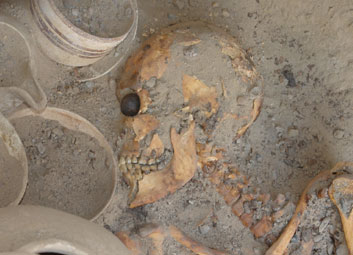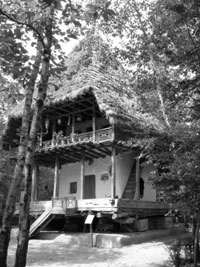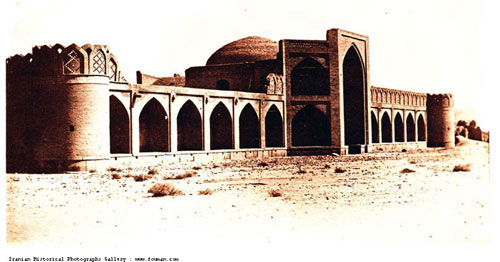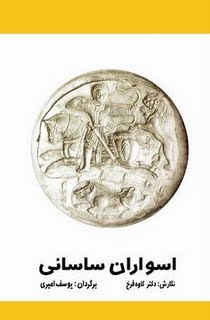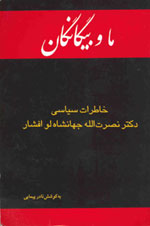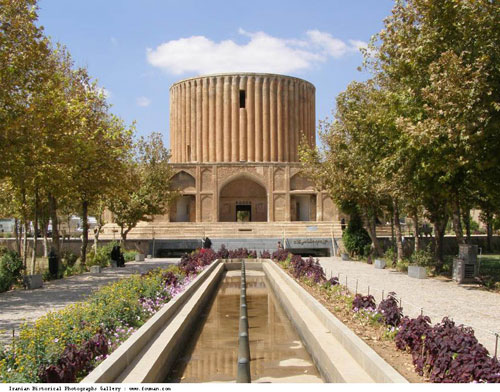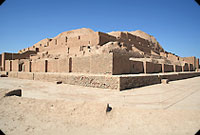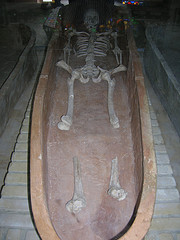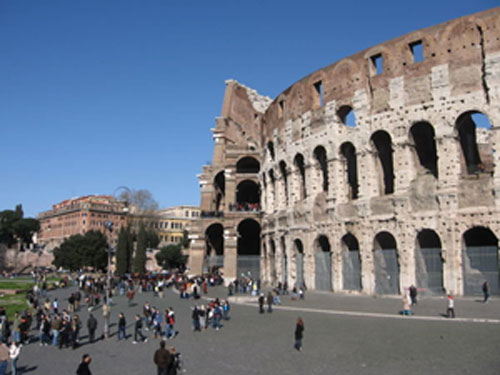|
Iran R O Z A N E H |
First Snow in Tabiriz, Iran |
|
September/December
2009
|
|
|
Bargozideh Ashaar-e Jaavdaneh Forough Farrokhzad Recited by: Shirin Tabibzadeh
Zoroastrians
Prayer CD - Click to order
Archive
|
Yes, we can too! "Never, never and never again shall it be that this beautiful land will again experience the oppression of one by another…" Nelson Mandela
"So even as we respect the unique culture and traditions of different countries, America will always be a voice for those aspirations that are universal. We will bear witness to the quiet dignity of reformers like Aung Sang Suu Kyi; to the bravery of Zimbabweans who cast their ballots in the face of beatings; to the hundreds of thousands who have marched silently through the streets of Iran. It is telling that the leaders of these governments fear the aspirations of their own people more than the power of any other nation. And it is the responsibility of all free people and free nations to make clear to these movements that hope and history are on their side."
He was in the prison of the Islamic Republic for months
Ramin
Jahanbegloo

- How Ferghey Demokrate Azarbaijan was formed? - Who ordered and who carried out the assassination of journalist Mohammad Masoud, And, how it was blamed on the Royal Court? - Who ordered the first assassination attempt on the Shah's life? - Want to know answer to many other historical questions?
Then read this book by Dr. Jahanshahlou, a former top leader of the Tudeh Party and the first deputy (Bash-Vazir) of Pishavari.
This indeed is a great book. If one can read only one book in his/her life in regard to Tudeh Party, Ferghe Demokrat, other chappies and the Soviet influence in Iran, this book is it. Written in first person and edited by two noted historians, Dr. Houshang Taale and Mr. Nader Paymai and approved by Dr. Jahan-Shahlou himself. This is the definitive work on that period of Iranian history.
I have the pleasure of knowing both these gentlemen; they are first class historians and great patriots.
Emarat-e KhorshidKalat-e Naderi Excavations Start at Tchogha Zanbil World Heritage Site
Tehran, 30 September 2008: An international team of archeologists has initiated excavation at the World Heritage site of Tchogha Zanbil in southwestern Iran. An archeological team made up of Iranian and Italian experts started the excavations Saturday at the World Heritage Site of Tchogha Zanbil in Iran’s southwestern province of Khuzestan. Initially, the excavations will focus on archeological detection, restoration and establishing a comprehensive database. The historic site is home to the only surviving ziggurat in Iran which is also one of the most important remaining evidence of the Elamite civilization (3,400 BCE - 550 BCE.) A ziggurat is a temple tower in the form of a terraced pyramid with successively receding stories. The architecture employed in the ziggurat resembles those of Egyptian pyramids and Mayan temples. Tchogha Zanbil ziggurat was registered by UNESCO in the World Heritage List in 1979. The archeological
team will also carry out a restoration project on the historic site
of Pasargadae which UNESCO listed in 2004. Ancient City in Hamedan Prov. to Be Converted into Site-Specific Museum
Covering over three hectares in area, the city was discovered about four years ago by chance during a construction project by the Hamedan Telecommunication Department in the city of Samen near Malayer in southeast Hamedan Province. A large part of the area has not been excavated due to the high level of moisture in the earth. Several halls and 25 rooms dug to a depth of four meters have been discovered at the excavated area. Several corridors connect the rooms to each other. A great number of bones and skeletons have been discovered in the rooms during the two seasons of excavations, which have been carried out by an archaeological team led by Ali Khaksar. “One of the aims of the excavations is to change the city into a site-specific museum,” Khaksar said.
According to the plan for the museum, the bones and skeletons have been left in-situ in the rooms, he stated. A great part of the city is believed to be located beneath the homes of the people living there. As a result, moisture from domestic waste water will make the upcoming excavations difficult. Initial studies show that the city dates back to an era before the Parthians (c. 250 BC-225 CE) came to power. According to the artifacts unearthed at the site, the rooms were used for special religious ceremonies, most likely Mithraism. There is some evidence suggesting that the ceremonies were held in secret.
|




